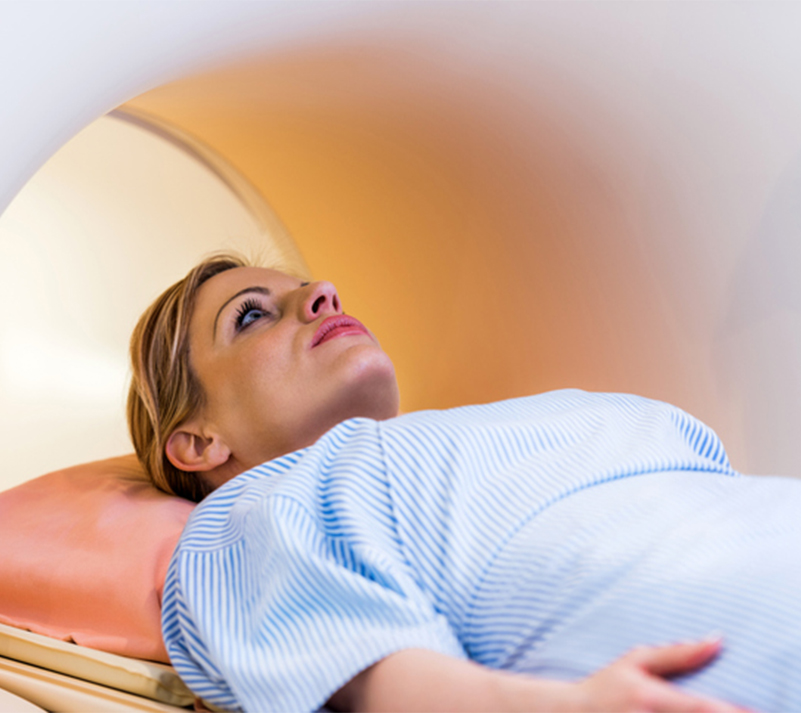Next-generation robotic platform
Syntric Medical is developing a patented next-generation robotic platform to perform realtime image-guided therapies with high precision and within an integrated patient workflow. The platform is designed for use for a wide range of clinical applications and can be used for both diagnosis and therapies, including lung biopsies as well as kidney and liver ablations.
Re-imaging CT-guided interventions
CT-guided interventions are an essential part of the diagnosis and treatment of many diseases, including liver, lung and kidney cancers. However, needle placement can be challenging when targets are small or surrounding by critical structures. Additionally, patient motion such as breathing leads to differences between the CT-image and the body.
Our technology makes accurate positioning possible, even with CT-to-body divergence.

Clinical need
Needle interventions such as biopsies and ablations are an essential part of the diagnosis and treatment of many types of cancers, including kidneys, liver and lungs. Unfortunately, misplacement of the needle position is a major cause of misdiagnosis and recurrences. Syntric Medical is developing a technology so clinicians can accurately position needles and directly verify whether needle positioning is performed correctly.
2.7million
yearly diagnoses of cancer in EuropeA staggering 2.7 million Europeans were diagnosed with cancer in 2020, and unfortunately this yearly number is only increasing.
13%
false-negative diagnosis after biopsyThe most common way to diagnose cancer is through a tissue biopsy, and to minimize invasiveness a needle biopsy is preferred over surgery. Unfortunately misplacing the needle leads to cancer not being found while present in 2%-13% of the time [1][2]. Improving needle targeting is essential to prevent misdiagnosis and treat the patient on time.
43%
Recurrences after ablationNeedle ablation is a minimally invasive therapy to ablate (or burn) a tumour. However, incomplete treatment happens when needles are not correctly positioned into the tumour or not enough energy is supplied during the ablation. Unfortunately, this leads to cancer recurrences of 14.5%, and in some procedures up to 43%, after the patient is treated [3][4].
[1] Wolters, Tineke, et al. “False-negative prostate needle biopsies: frequency, histopathologic features, and follow-up.” The American journal of surgical pathology 34.1 (2010): 35-43.
[2] Dillon, Mary F., et al. “The accuracy of ultrasound, stereotactic, and clinical core biopsies in the diagnosis of breast cancer, with an analysis of false-negative cases.” Annals of surgery 242.5 (2005): 701.
[3] Ng, Kelvin K., et al. “Analysis of recurrence pattern and its influence on survival outcome after radiofrequency ablation of hepatocellular carcinoma.” Journal of gastrointestinal surgery 12.1 (2008): 183-191.
[4] Beland, Michael D., et al. “Primary non–small cell lung cancer: review of frequency, location, and time of recurrence after radiofrequency ablation.” Radiology 254.1 (2010): 301-307.
A platform technology for real-time image-guided instrument positioning
The patented platform technology is used to accurately position instruments within an CT-scanner. Core of the concept it provides a large workspace and versatility, making it suitable for a wide range of clinical applications. This makes the system unique, as alternative technologies under development are limited to one specific clinical procedure due to their design.
The advantages of the system are shown below.
Contact
Syntric Medical BV
info[at]syntricmedical.com



